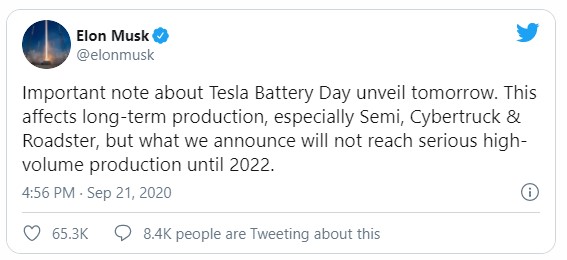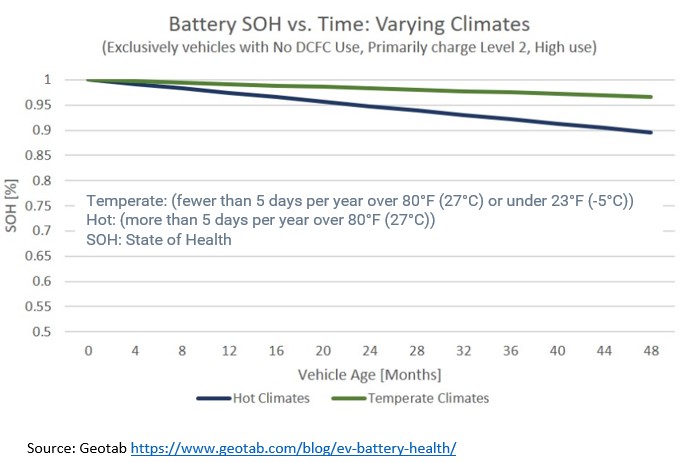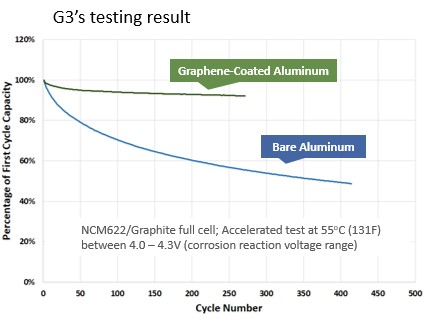DAYTON, OH, September 30, 2020 – Global Graphene Group (G3), a Dayton, Ohio-based materials science company, was recently awarded a US Patent that is in-line with leading EV OEM technical solution roadmaps. G3’s patent for its elastomer-encapsulated particles of high-capacity anode active materials for lithium batteries (US Patent No. 10,734,642 (08/04/2020)) covers essentially any high-elasticity and ion-conducting polymer for lithium-ion battery anode applications.
G3 plans to capitalize on the explosive growth in EV battery development and is expanding production of its silicon-based anode materials.
G3’s expansion supports the industry’s need for better battery solutions recently discussed by a leading EV OEM. G3’s focus on silicon anodes will drive significant improvements in lithium-ion batteries. Industry-leading EV OEMs indicate elastic and ion-conducting polymer-encapsulated Si technology will be needed to drive EV battery technology that will lower cost and provide higher energy density, extending the EV driving range by 20%. G3’s innovative Si anodes can deliver this and more today as a drop-in technology. Furthermore, G3’s entire suite of battery-enabling technologies can deliver driving range improvements of 50-100% at significant cost savings.
G3 has developed the anode materials that precisely meet battery requirements for next-generation EV batteries as outlined by the industry. G3 is actively seeking to establish partnerships for expanding manufacturing capacity of its advanced anode materials.
Leading EV OEMs are focusing on silicon anodes that have the following features:
- Low-cost Si particles
- Elastic, ion-conducting polymer coating on these Si particles
- Highly elastic binder used in the anode to maintain electrode structural integrity.
“G3’s Si-anode technology meet these criteria,” said Dr. Bor Jang, G3 CEO and co-founder. “Recent announcements by EV OEM’s validate that G3’s Si-anode solutions will be a key enabler for next-generation EV batteries. Our team is excited that the EV industry is focused on the same critical path as we see as foundational using Si-anode improving EV batteries.”
“Electric vehicles will continue to grow global market share over the next decade,” said Adam Quirk, G3 VP of Business Development. “Our EV battery technology, including Si-anode, are very attractive to EV manufacturers. It’s a drop-in solution that can easily be incorporated into existing manufacturing processes. We are engaged with many top-tier OEMs who are now validating our solutions.”
G3 is holding a free webinar on Thursday, October 8 at 2 p.m. Eastern to discuss this and other battery technologies for EVs and the direction of the EV battery market. Registration is open for the webinar online: https://bit.ly/3jfI1D0.
Recently, industry leaders stated that the anode material cost could be dropped to $1.20 a kilowatt hour by using new surface stabilization and elastic binder approaches (88% reduction in the anode material cost). G3’s innovative solutions start with silicon and stabilize it with an elastic, ion-conducting polymer that integrates into the electrode with an elastic binder. G3 has the most significant intellectual properties (IPs) in high-capacity anode materials with 80+ US patents (issued or pending), 35 of which are specifically directed at elastic ion-conducting polymer coatings and binders.
The most commonly used material for lithium-ion batteries today is graphite. However, graphite can only store lithium up to 372 mAh/g during a battery charge. In contrast, Si can store lithium up to an amount of 4200 mAh/g), significantly increasing energy density.
About Global Graphene Group
Global Graphene Group, Inc. (G3) is a leading material science and product solutions company focused on graphene and advanced battery technologies. It has an award-winning, best-in-class intellectual property portfolio with more than 470 US patents and applications. In addition, G3 holds many of the world’s firsts in graphene-related breakthroughs that have resulted in cutting edge products. G3, headquartered in Dayton, Ohio, is the holding company for a variety of subsidiaries. Taiwan Graphene Company is the largest volume producer of single-layer graphene globally. It is focused on high volume production of graphene raw materials, enhanced thermal interface materials (films, pastes, inks), and nanocomposite products (both thermoplastics and thermosets). Honeycomb Battery Company is focused on commercializing next generation lithium ion battery electrodes, battery performance solutions enhanced with graphene, and improved battery reliability performance. It produces graphene-wrapped or elastomer-encapsulated nano silicon particles to improve anode stability, prelithiation to reduce capacity loss, significant cost reduction in cost of goods, and has the world’s largest high-capacity silicon anode production line in the US.
Media Contact:
Amy Maggart – Corporate Communications Administrator
Global Graphene Group
Tel: (937) 751-6784
[email protected]





 In Global Graphene Group’s home state of Ohio, it is often joked that there are four seasons: winter, construction prep, actual construction and construction wrap-up. When orange cones are lined along the side of the road, Ohioans know they’re in for months of construction fun. There are some highways that seem to always be under construction. When one project ends, another starts.
In Global Graphene Group’s home state of Ohio, it is often joked that there are four seasons: winter, construction prep, actual construction and construction wrap-up. When orange cones are lined along the side of the road, Ohioans know they’re in for months of construction fun. There are some highways that seem to always be under construction. When one project ends, another starts.